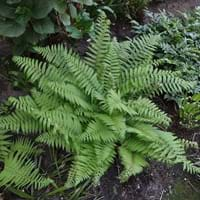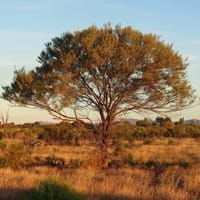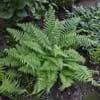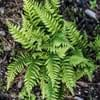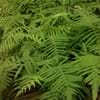Life Span
Perennial
Perennial
Origin
Europe, Eastern Europe, Southern Europe, Western Europe, Turkey
Australia
Types
Not Available
Not Available
Habitat
Shady Edge, Woodland Garden Dappled Shade
Scrubs, tussock grasslands, Upland savannas
USDA Hardiness Zone
6-9
10-11
Sunset Zone
4, 5, 6, 7, 8, 9, 14, 15, 16, 17, 18, 19, 20, 21, 22, 23, 24
8, 9, 12, 13, 14, 15, 16, 17, 18, 19, 20, 21, 22, 23, 24
Habit
Clump-Forming
Upright/Erect
Flower Color
Not Available
Lemon yellow
Flower Color Modifier
Bicolor
Bicolor
Fruit Color
Not Available
Gray Green
Leaf Color in Spring
Green
Blue Green
Leaf Color in Summer
Dark Green
Blue Green
Leaf Color in Fall
Dark Green
Blue Green
Leaf Color in Winter
Dark Green
Blue Green
Leaf Shape
Saw-tooth like
Long Narrow
Plant Season
Spring, Summer, Fall, Winter
Spring
Sunlight
Full Shade, Partial shade
Full Sun
Type of Soil
Clay, Loam
Loam, Sand
The pH of Soil
Neutral, Alkaline
Acidic, Neutral, Alkaline
Soil Drainage
Well drained
Well drained
Bloom Time
All year
Spring, Late Winter
Tolerances
Drought, Dry Conditions, Light Frost, Shade areas, Variety of soil types
Drought
Where to Plant?
Ground
Ground
How to Plant?
Divison, From Rhizomes, Spores
Seedlings
Plant Maintenance
Medium
Medium
Watering Requirements
when new, water every week
Do not water excessively
In Summer
Lots of watering
Lots of watering
In Spring
Moderate
Moderate
In Winter
Average Water
Average Water
Soil pH
Neutral, Alkaline
Acidic, Neutral, Alkaline
Soil Type
Clay, Loam
Loam, Sand
Soil Drainage Capacity
Well drained
Well drained
Sun Exposure
Full Shade, Partial shade
Full Sun
Pruning
Remove damaged leaves, Remove dead branches, Remove dead leaves
Remove dead or diseased plant parts, Requires little pruning
Fertilizers
All-Purpose Liquid Fertilizer
All-Purpose Liquid Fertilizer, No fertilizers needed
Pests and Diseases
Red blotch
Insects, Root rot
Plant Tolerance
Drought
Drought
Flower Petal Number
Single
Single
Foliage Texture
Fine
Fine
Foliage Sheen
Glossy
Matte
Invasive
Not Available
No
Attracts
Birds, Butterflies, Hummingbirds
Butterflies
Allergy
Not Available
Asthma, Eye irritation, Headache, Nose Irritation, Throat itching, Vomiting
Aesthetic Uses
Cottage Garden, Showy Purposes
Showy Purposes
Beauty Benefits
Good for skin
Not Available
Environmental Uses
Air purification
Air purification, soil stabilisation
Medicinal Uses
Poultice, Sore throat, Tonsillitis
Not Available
Part of Plant Used
Leaves, Root, Stem
Flowers, Sap, Seeds
Other Uses
Used as Ornamental plant, Used for its medicinal properties
Used as a dye, Wood is used fore making tools
Used As Indoor Plant
No
No
Used As Outdoor Plant
Yes
Yes
Garden Design
Bedding Plant, Container, Feature Plant, Houseplant, Tropical, Water Gardens
Shade Trees, Street Trees
Botanical Name
POLYSTICHUM setiferum
ACACIA aneura
Common Name
Alaska fern
Mulga, True Mulga
In Hindi
Soft Shield Fern
Mulga
In German
Grannen-Schildfarn
Mulga
In French
Soft Shield Fern
Mulga
In Spanish
Soft Shield Fern
Mulga
In Greek
Soft Shield Fern
mulga
In Portuguese
Soft Shield Fern
Mulga
In Polish
Soft Shield Fern
Mulga
In Latin
Soft Shield Fern
Mulga
Phylum
Pteridophyta
Magnoliophyta
Class
Filicopsida
Magnoliopsida
Order
Polypodiales
Fabales
Family
Dryopteridaceae
Fabaceae
Clade
Not Available
Angiosperms, Eudicots, Rosids
Tribe
Not Available
Not Available
Subfamily
Not Available
Not Available
Number of Species
Not Available
Not Available
Season and Care of Soft Shield Fern and Mulga Tree
Season and care of Soft Shield Fern and Mulga Tree is important to know. While considering everything about Soft Shield Fern and Mulga Tree Care, growing season is an essential factor. Soft Shield Fern season is Spring, Summer, Fall and Winter and Mulga Tree season is Spring, Summer, Fall and Winter. The type of soil for Soft Shield Fern is Clay, Loam and for Mulga Tree is Loam, Sand while the PH of soil for Soft Shield Fern is Neutral, Alkaline and for Mulga Tree is Acidic, Neutral, Alkaline.
Soft Shield Fern and Mulga Tree Physical Information
Soft Shield Fern and Mulga Tree physical information is very important for comparison. Soft Shield Fern height is 90.00 cm and width 60.00 cm whereas Mulga Tree height is 550.00 cm and width 370.00 cm. The color specification of Soft Shield Fern and Mulga Tree are as follows:
Soft Shield Fern flower color: Not Available
Soft Shield Fern leaf color: Green
Mulga Tree flower color: Lemon yellow
- Mulga Tree leaf color: Blue Green
Care of Soft Shield Fern and Mulga Tree
Care of Soft Shield Fern and Mulga Tree include pruning, fertilizers, watering etc. Soft Shield Fern pruning is done Remove damaged leaves, Remove dead branches and Remove dead leaves and Mulga Tree pruning is done Remove dead or diseased plant parts and Requires little pruning. In summer Soft Shield Fern needs Lots of watering and in winter, it needs Average Water. Whereas, in summer Mulga Tree needs Lots of watering and in winter, it needs Average Water.
